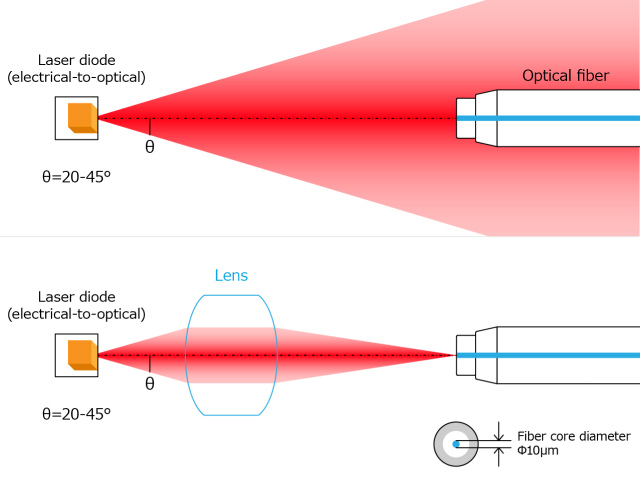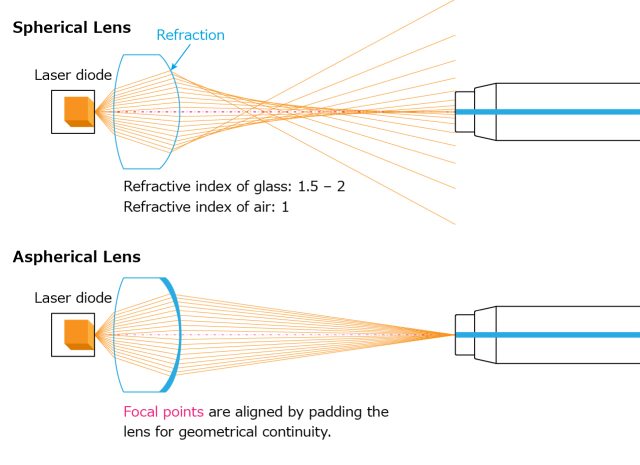Product FAQ
Aspherical Glass Lenses
Optical communication (or fiber-optic communication) is the transmission of information and data through optical fiber. Electrical signals from a device are transmitted over optical fiber after conversion into optical signals using a laser diode (LD). Those optical signals are then conveyed to another device following their conversion back into electrical signals using a photodiode (PD).
Alps Alpine’s aspherical lenses are a component used during the feeding of optical signals into optical fiber.
Left alone, light emitted from a laser diode diverges. The light can be collimated or focused by directing it through an aspherical lens.
The optical fiber core has a diameter of around 10µm and light needs to be directed into the center of it. This is what aspherical lenses are used for.
At the other end, light emerging from optical fiber also diverges. The light is focused through a lens and directed into a photodiode.

Using a spherical lens, light does not converge in one place, leading to what is called “aberration.” Aspherical lenses get close to zero aberration, making it easier to focus light in one place.

Glass lenses are resilient to temperature changes, therefore focal point shifts due to temperature changes are less likely to occur than with plastic lenses.
When transmitting through optical fiber, 1310nm is the wavelength resulting in the least light loss, while 1550nm is the wavelength resulting in the least optical waveform distortion.
Optical communication takes place within wavelength bands resulting in the lowest losses.
They are mainly used in products like optical communication modules, but we also develop other applications.
Maximum dimensions are a 10mm diameter for a holder-integrated lens, and a 9mm diameter (or 6×6mm) for a bare lens without a holder.
Minimum dimensions are a 1.5mm diameter for a holder-integrated lens, and a 0.6mm diameter (or 0.3x0.4mm) for a bare lens without a holder.
Alps Alpine aspherical lenses are available in extensive varieties, including cylindrical holder-integrated lenses, TO Can lenses, welded holder-integrated lenses, convex holder-integrated lenses, cylindrical bare lenses, square bare lenses, lens arrays and cylindrical lenses. We supply them to optical communication, automotive, consumer and industrial equipment markets.
Another feature is we mold holder-integrated and bare lenses employing molds created using ultra-precision machining.
In Japan, our plants engage in an integrated system involving mold manufacturing, lens molding, vapor deposition and lamination through to inspection.
Yes. Lens data can be provided in a file format such as Zemax.

